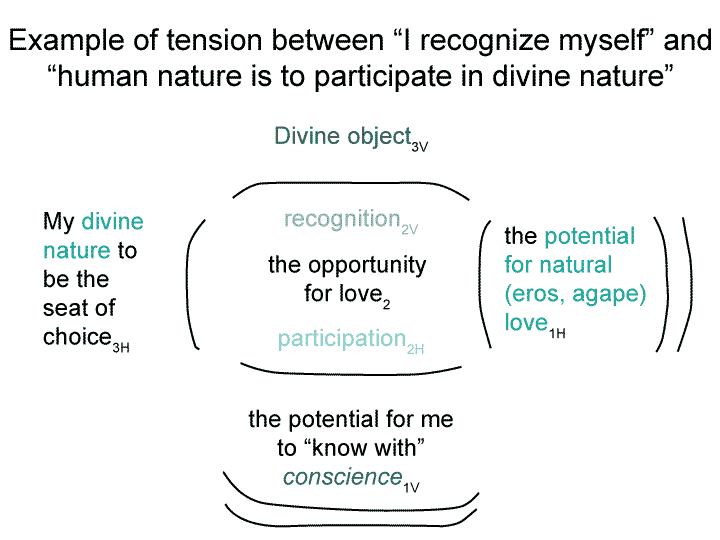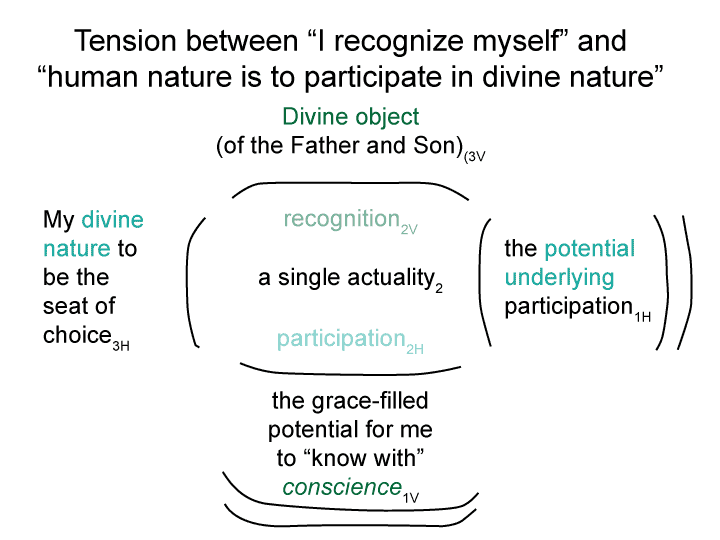Man and Sin by Piet Schoonenberg (1964) 2.2H
[Does the intersecting nested form of recognition and participation capture Schoonenberg’s dichotomy of ‘the whole person and the whole of reality’?
Does it also capture the dichotomy of ‘grace as opposed to nature’?
So far, ‘grace’ is opposed to ‘self-destruction’ as two contradicting ‘states of existence’. The opportunity to love enters the tension between recognition and participation.
Can I formulate a dichotomy of ‘grace in contrast to nature’ from this?]


